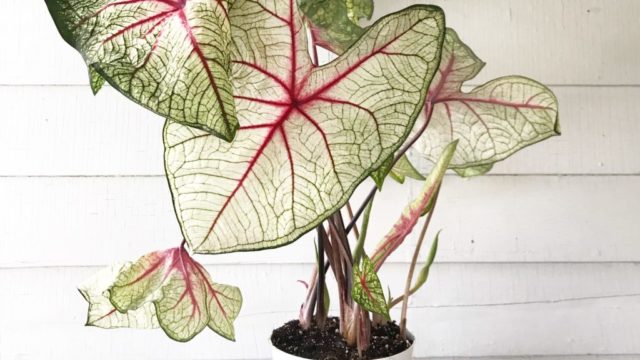
The most romantic plants, hands down, are Caladium. Heart shaped leaves, delicately translucent in drop dead gorgeous colors are just plain swoon worthy. And they know it too. Somewhat temperamental and finicky, Caladium are the loveliest houseplants who secretly hate you. They kind of remind me of cats. That’s it, Caladium are the cats of the plant world.
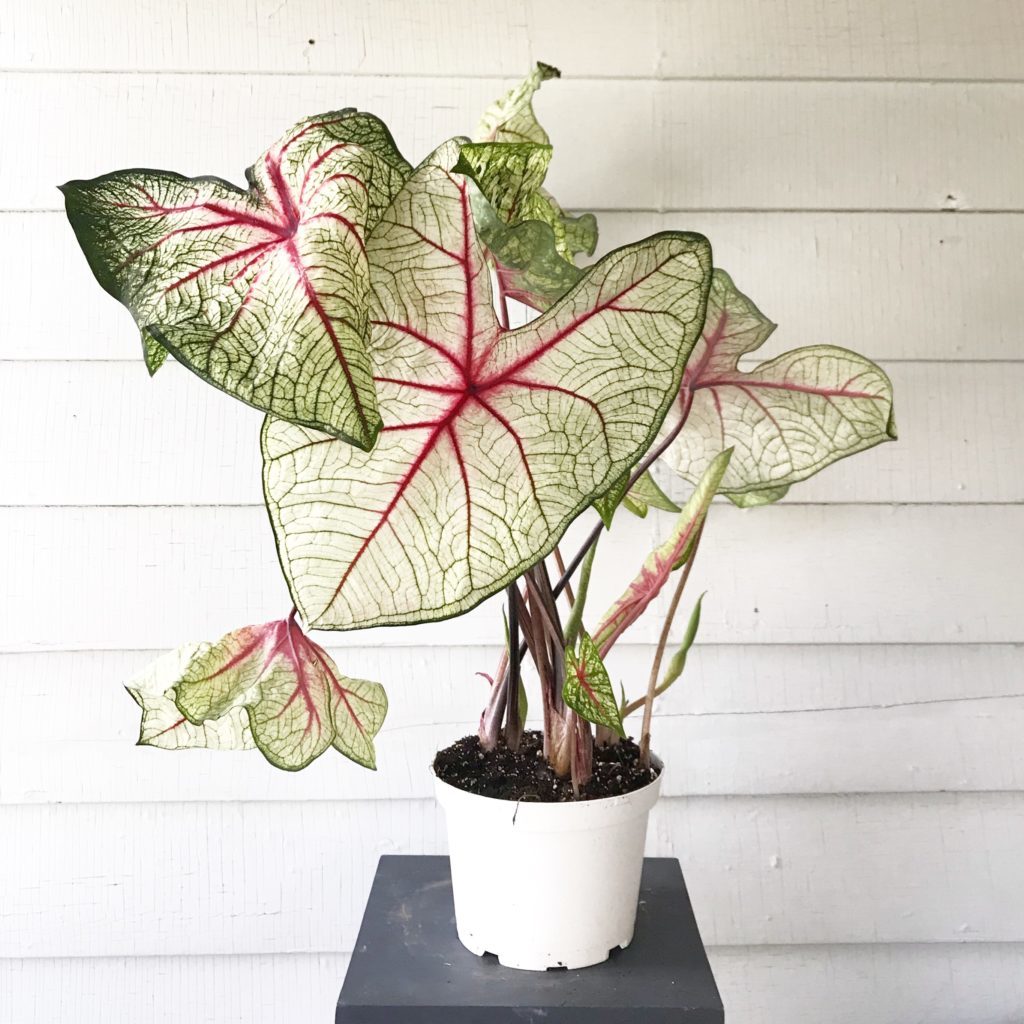
What are Caladium?
These typical outdoor plants are gaining popularity as houseplants, making their way inside homes, sitting on your couch and watching Netflix. Caladium are part of the Araceae family, a name you might recall in a previous post. Yup, they’re related to monsteras! Monsteras, Elephant Ear, Colocasia – Caladium are part of this houseplant family we all love.
Caladium are funny though, and grow a bit different than our Monstera friends – they are considered tubers (yeah, like potatoes), and grow from a tuberous corm (or bulbs in colder regions). They’re considered perennials and are native to tropical South and Central America where they grow in shady, moisty areas.
Are Caladium Safe for Pets?
Sadly, no Caladium are not safe for pets. Since the Araceae family is full of houseplants toxic to cats and dogs, Caladium are no different. Like Monsteras, they posses Calcium Oxalate Crystals that are a natural deterrent for predators snacking on them in the wild. These crystals lead to a weird stinging in the throat and all-over discomfort which is bad news for pets. And kids. And people. Don’t eat your houseplants.
Many pet people still keep Caladium in their house and, because of the size of their leaves, they shouldn’t be a problem. However, the stems are stringy-looking when the leaves are just popping out which may or may not entice a cat. Really any stringy object you don’t want eaten will entice a cat. I have one Caladium and keep her on my porch in summer and on a shelf when she comes indoors to avoid unnecessary temptation.
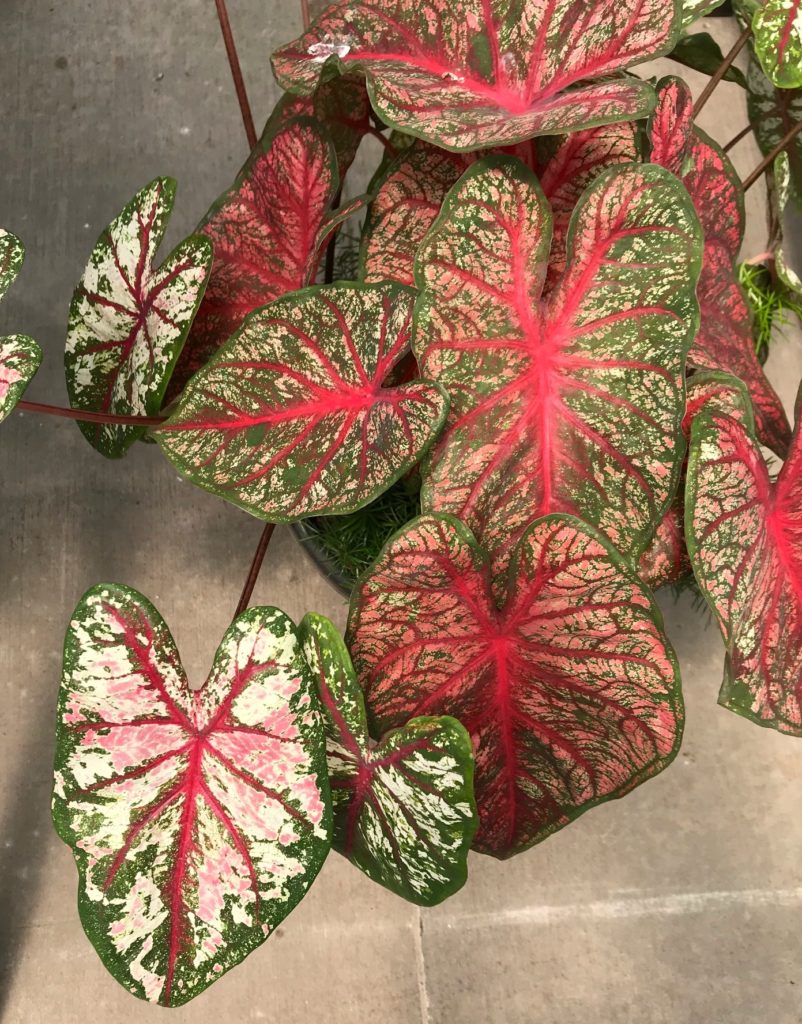
Caring for Caladium
If you do decide to bring a Caladium friend in your home, be prepared. They grow really nice outdoors but indoors I’ve found they can be sassy. Not Maidenhair-fern sassy but still picky about humidity and watering.
Temperature: Caladium like hot, like Africa-hot, temperatures and lots of humidity. The ends of their leaves may brown and crisp if it’s too dry. They also dislike low temperatures, and by low I mean below 60 degrees. Any temperature lower can damage or cause them to slowly rot and die a slow death.
Watering: Keep these babies evenly moist. I never let mine fully dry out since they go downhill pretty fast. Since they like heat you want to be diligent – checking their moisture level every couple days.
Feeding: Like teenagers, these babies are avid growers so they are also big eaters. A basic fertilizer (I like and use Jack’s) every couple weeks will keep them growing and growing and growing.
Light: Because of their tissue-thin leaves, Caladium prefer indirect but bright sun. I have mine in an east facing window, a few feet back. Direct sun will result in scorching and a sad plant.
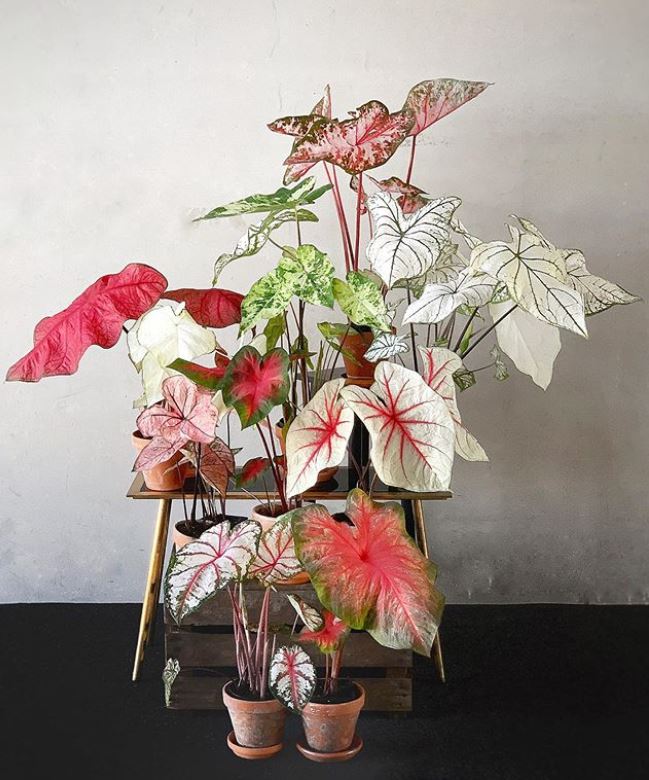
Overwintering Caladium
Caladiums are tricky since they become dormant and sleepy when the temperatures drop. While many people throw their Caladiums out once fall comes, which seems kind of mean, there is a way to overwinter them so you can enjoy them next year. Overwintering can work if your Caladiums are indoors or outside planted in the yard.
If indoors: First, stop watering once leaves droop. Soon their leaves will die back and dry up and begin dormancy for the cold season. Keep them in a cool (not cold) place in a jar (I love using these for everything).
Then, bring back to a warm, sunny location in early spring, or when your temperatures begin to get in the 60s. Once you see new buds, you can begin watering them again and move to a sunnier location.
If outdoors: Harvest the tuber before it gets cold, preferably before there are chances of the first frost. Frost will kill these babies, so the most important part about overwintering is taking them up before it happens.
Then remove excess soil, trim them of any dead leaves and let them dry out indoors for a week. Arrange them loosely in a mesh shopping bag inside a plastic bin and store in a dry dark area (similar to how you store onions and potatoes). I actually store mine at the top of my basement stairs; there is doesn’t usually go below 50 degrees even in winter. I take them out in April-ish (this is NY weather we’re talking about) and plant them in a sunny warm area by May. I usually see growth soon after that.
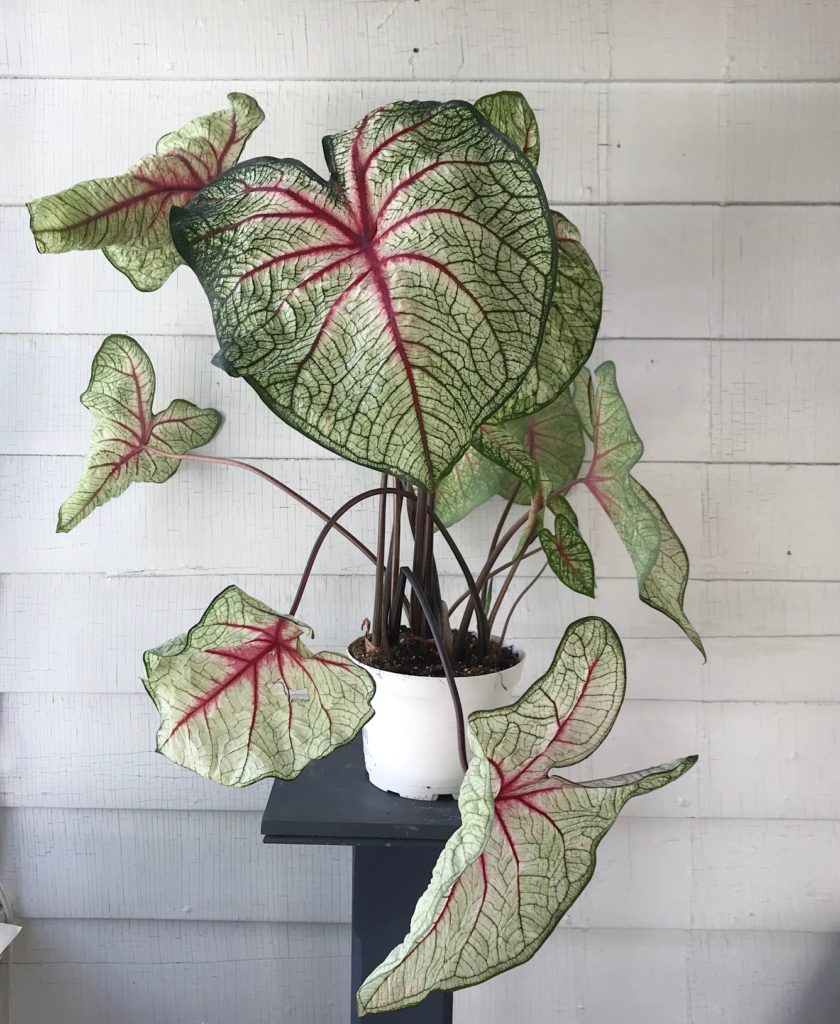
Keeping Those Heart-Shaped Leaves Happy
I mean, the best of part of Caladium are those yummy leaves. Sometimes, though, they turn brown on the edges, wilt, or yellow and that’s sad. Here are some basic troubleshooting tips to keep those leaves happy.

- If the leaves are wilted, check the soil to see if it needs water, if not, it might be going into the dormant stage.
- Brown edges indicate that more humidity is needed. Caladium are a tad fussy, and you need to keep the air warm, but not dry, and it circulated and humid.
- Yellow Caladium leaves are usually do to over-watering or a soggy bottom. Check the soil immediately and squeeze out extra water if needed. No plant likes to sit in a wet diaper.
I also LOVE Florian at @curlyfloplant on Instagram. He posts a lot of Caladium and indoor plants, and is an adorable man too. I’ll leave you with one more Caladium (above), which is from his collection, to just convince you again to add one to your collection. Now you can care for them with confidence!

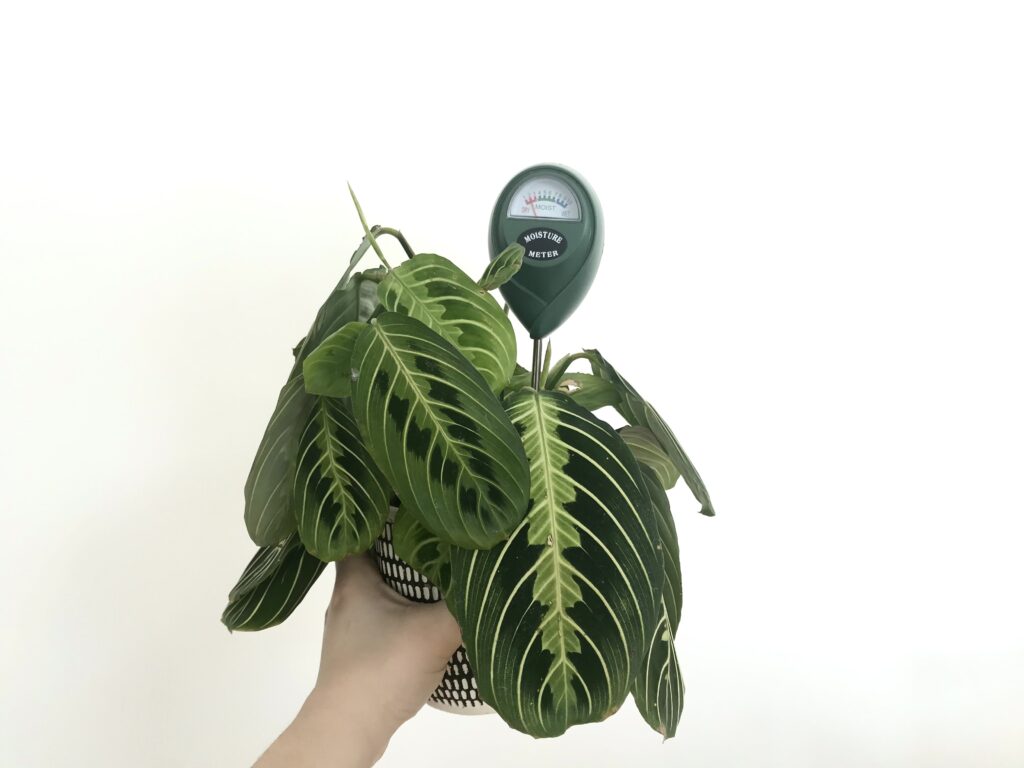
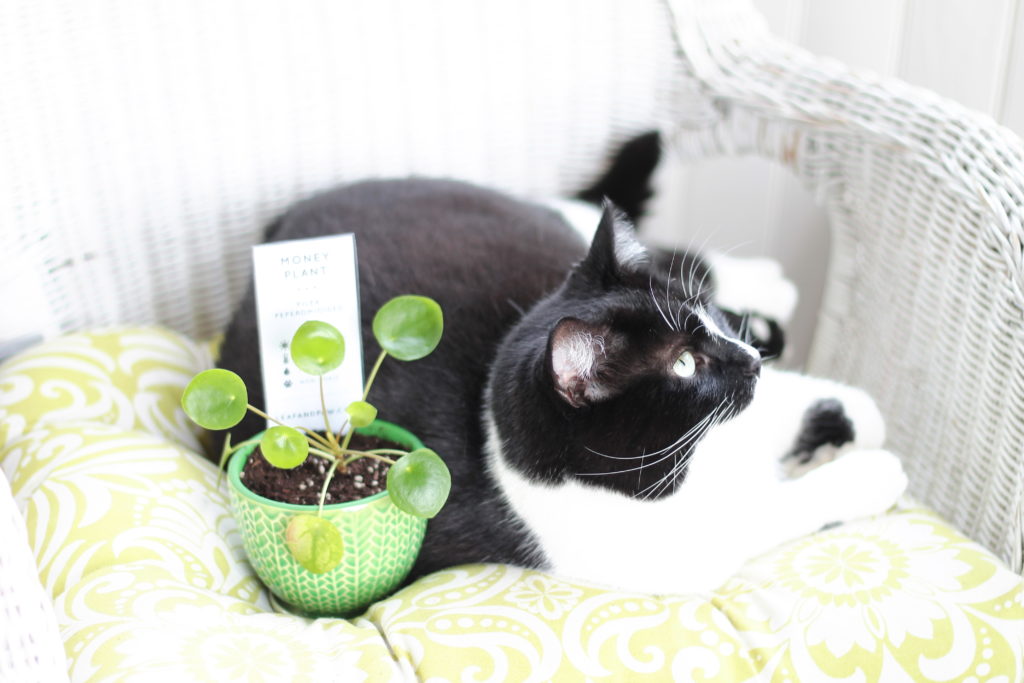
Thank for this informative article. I added a caladium and very glad I did – with this article I can confidently add more.
I planted these from bulbs and haven’t seen anything for growth, followed planting instructions to the letter. Any advice??
Hi Colleen, these take a bit to start showing any growth. Depending on when you planted them and where you’re located, it may be a month or so before you see any growth. With new bulbs, they tend to take a while to establish themselves.
hi there! i just got a caladium today and had no idea they were harmful to cats *i only have one cat* he doesn’t usually mess with my plants but i’m not sure how he’ll react to this plant. should i just keep an eye on him around the plant??
Yes definitely. My cat who never eats plants munched a bit on my Caladium. Definitely keep out of reach, on a shelf, up high. I wouldn’t think these would be a cat magnet either!
Hi there! I’ve just started growing from two bulbs, and thesy seem to be growing quickly under a grow light inside my Oregon apartment. One issue, though – suddenly they appear to be infested with spider mites?!?! I’ve never experienced this with any of my other plants (and I have more than 30), and I’m not at all sure what to do. Do I repot?? I know some people spray with diluted essential oils for pests; is that something you’d recommend? Help?! Please?!
Hi Erika! So, spidermites are awful and spread quickly, so I would immediately isolate the Caladium and get them out of your house. Check your other plants for leaf damage and webbing. Caladium, especially grown from bulbs indoors are delicate and susceptible to bugs. Buy a decent systemic (natural is not the way to go with spider mites, they’re hard to get rid of) – I used this when I had an infestation before. Your bulbs may be salvageable but definitely do not return them indoors until they are pest free.
Great article! My plants are doing great here in Northeast Georgia. I’m glad you included the information on how to keep the bulbs during Winter.